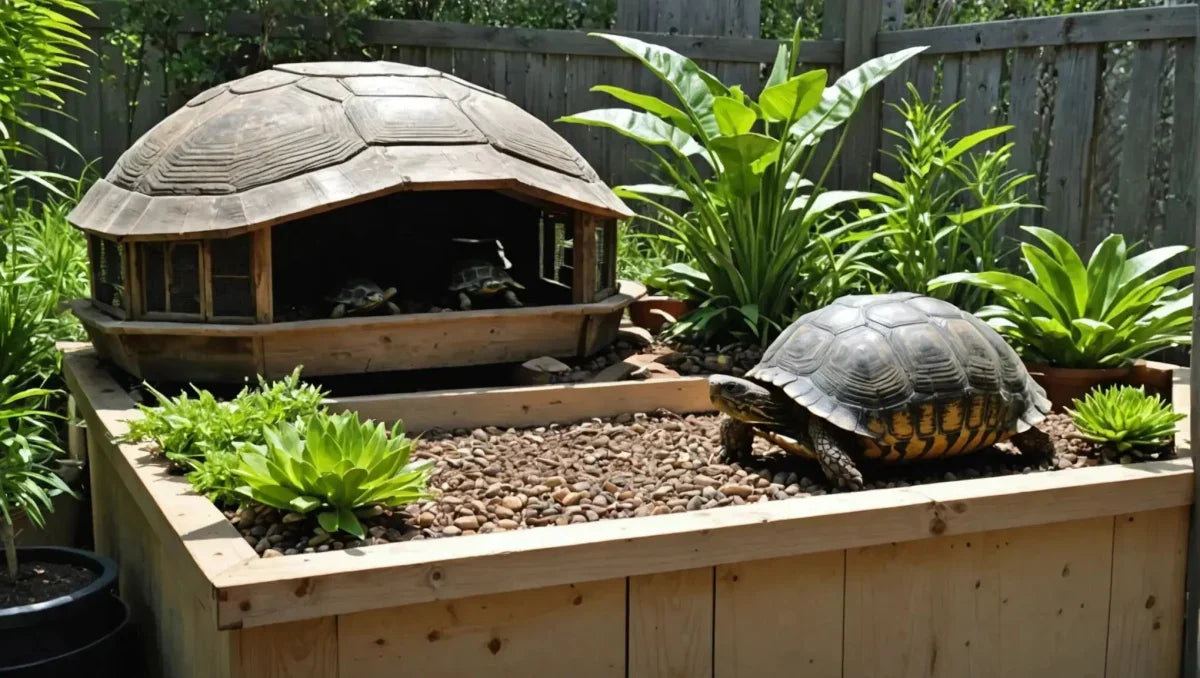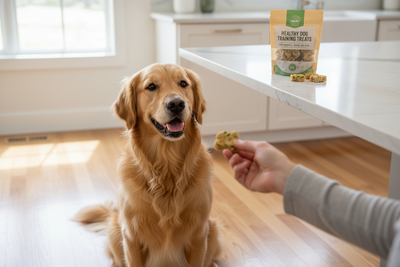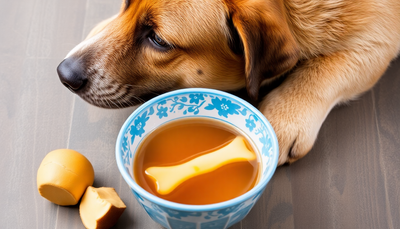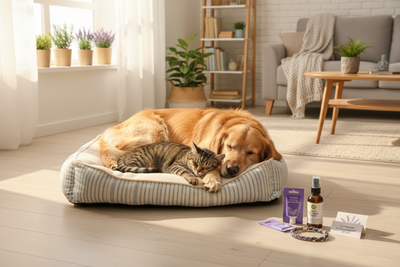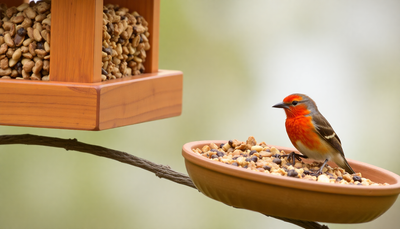
Embark on a journey of creativity and inspiration designed for those who adore their shelled companions! Discover a range of innovative ideas tailored to breathe life into your tortoise's habitat. From designs inspired by their natural environments to hands-on projects adding a personal touch, this guide offers a wealth of imaginative concepts to elevate your tortoise enclosure. Whether you're a seasoned reptile enthusiast or a newcomer to this captivating world, these decor suggestions will spark your creativity and provide practical advice for creating an engaging environment for your tortoises. Get ready to transform their living space into a sanctuary that not only meets their needs but also showcases your dedication to these fascinating creatures. Join us in exploring a universe of possibilities where the potential to craft an exceptional habitat for your tortoises is limitless!.
Natural Habitat Simulation
Creating a natural habitat simulation within tortoise enclosures is crucial for the well-being and happiness of these amazing reptiles. Let's explore why replicating their natural environment is vital and delve into creative ideas for integrating various natural elements into their living spaces.
Significance of Replicating a Natural Habitat:
-
Psychological Well-being: When tortoises are surrounded by elements that mimic their natural habitat, they feel more secure and less stressed, leading to improved psychological health.
-
Behavioral Enrichment: A simulated natural habitat offers opportunities for tortoises to exhibit their natural behaviors, such as burrowing, climbing, and foraging, promoting their mental stimulation and overall happiness.
-
Physical Health: The presence of natural elements like rocks, plants, and appropriate substrate encourages physical activity, helping to maintain the tortoises' physical health and reducing the risk of obesity.
Ideas for Integration:
-
Rocks and Caves: Incorporating rocks of various shapes and sizes, along with artificial caves, provides tortoises with spaces to explore, hide, and climb, resembling their natural rocky environments.
-
Live Plants and Grazing Areas: Introducing live plants like edible greens not only adds a natural aesthetic to the enclosure but also serves as a food source for the tortoises, encouraging natural feeding behaviors.
-
Diverse Substrate Options: Utilizing a combination of substrates such as coconut coir, topsoil, and sand creates a varied terrain that allows for digging, nesting, and burrowing activities, closely resembling the tortoises' natural habitat.
-
Environmental Enrichment: Implementing interactive elements like puzzle feeders, scent trails, and climbing structures provides mental stimulation and enrichment, keeping the tortoises active and engaged.
-
UV Lighting and Heat Sources: Installing UVB lighting and heat lamps at strategic locations within the enclosure helps replicate the natural sunlight and warmth that tortoises require for proper metabolism and shell health.
-
Seasonal Changes: Mimicking seasonal variations in temperature, humidity, and daylight hours within the enclosure can promote natural behaviors like hibernation and breeding, contributing to the overall well-being of the tortoises.
By focusing on creating a natural habitat simulation in tortoise enclosures, we not only ensure the physical health and mental stimulation of these incredible creatures but also deepen our understanding and appreciation of their natural behaviors and instincts. Providing a rich and dynamic environment that closely mirrors their wild habitat allows tortoises to thrive in captivity while fostering a stronger connection to the natural world.
The Dual Functionality of Decor for Tortoises
Decor plays a crucial role in the habitat of pet tortoises, offering more than just visual appeal. In this blog section, we will explore how decor serves dual purposes by providing both functional and aesthetic benefits for these fascinating reptiles.
Enrichment Through Hides: Creating a Safe Haven
Hides are essential decor elements that not only create a sense of security for tortoises but also offer them a retreat where they can rest and feel safe. By strategically placing hides of varying sizes and shapes in the enclosure, tortoises can exhibit their natural behaviors of burrowing and seeking shelter. These hiding spots also serve as a way for tortoises to regulate their body temperature and reduce stress levels.
Climbing Structures for Physical and Mental Stimulation
Incorporating climbing structures such as rocks, logs, or artificial platforms in the tortoise habitat encourages physical activity and stimulates natural behaviors like climbing. These structures also provide opportunities for tortoises to bask under heat lamps or UV lights, aiding in their thermoregulation. Additionally, climbing promotes muscle development and overall physical health, ensuring that your tortoise remains active and engaged.
Embracing Natural Elements for Well-Being
Utilizing natural elements like untreated wood, rocks, and plants in the decor not only enhances the aesthetic appeal of the enclosure but also offers sensory stimulation to tortoises. Natural textures and scents can engage their senses, promoting exploration and foraging behaviors. By mimicking their natural environment, you can enhance your tortoise's overall well-being and create a more enriching living space.
Ensuring Safety and Functionality
While decor should enhance the visual appeal of the tortoise habitat, it is equally important to prioritize functionality. Decor elements should be safe, easy to clean, and provide opportunities for behavior expression and enrichment. Ensure that all decor items are non-toxic and pose no harm to your pet. Additionally, regularly inspect and maintain decor to prevent any hazards or discomfort for your tortoise.
DIY Decor Ideas and Personalization
Enhance your tortoise's habitat with creative do-it-yourself decor projects. From crafting edible decor items using tortoise-safe plants to building custom hides from natural materials, there are numerous ways to personalize the enclosure while catering to your tortoise's needs. Get creative and involve your tortoise in the process to create a space that truly reflects their personality and preferences.
By incorporating a thoughtful selection of decor elements in your tortoise's habitat, you can create a stimulating and enriching environment that promotes their physical and mental well-being. Remember, decor is not just decoration; it plays a vital role in enhancing the quality of life for your beloved tortoise.
Ensuring Safety
The Significance of Safe Decor for Tortoises
Ensuring the safety of your beloved tortoises goes beyond just providing them with food and shelter. When it comes to decorating their habitat, the choices you make can have a significant impact on their well-being. Opting for safe decor is paramount to safeguarding your tortoises from potential harm and ensuring they thrive in a secure environment.
Tips for Selecting Non-Toxic Materials
-
Prioritize Untreated Wood: Natural wood, free from chemicals and stains, serves as an excellent choice for tortoise decorations. It not only provides a natural aesthetic but also minimizes the risk of toxicity if chewed on by your pets.
-
Explore Natural Fibers: Materials like untreated grasses, hay, and coconut fibers are safe options for creating a cozy and enriching environment for your tortoises. These materials are not only non-toxic but also mimic their natural habitat.
-
Beware of Harmful Paints: When adding color to your tortoise habitat, opt for non-toxic paints specifically formulated for pet use. Avoid using paints that contain lead, zinc, or other toxic substances that could pose a danger to your tortoises.
Ensuring Decorative Safety Measures
-
Secure Decorations Adequately: Prevent accidents by securing all decorations firmly in place. Use non-toxic adhesives or fasteners to ensure that decorative items remain stable and cannot be dislodged easily.
-
Consider Tortoise-Friendly Placement: Place decorations away from heat sources, UV lamps, or any other fixtures that could potentially harm your tortoises. Ensuring a safe distance from such elements reduces the risk of accidents.
-
Regular Inspection and Maintenance: Routinely check all decorations for signs of wear, damage, or loose parts. Replace any compromised items promptly to prevent potential hazards and maintain a safe environment for your tortoises.
Creating a Stimulating Environment
-
Incorporate Hiding Spots: Provide your tortoises with hiding spots like hollow logs, rock caves, or plant cover. These spots offer security and a sense of privacy, reducing stress levels in your pets.
-
Offer Varied Terrain: Include a mix of flat surfaces, slopes, and obstacles in the habitat to encourage natural behaviors like climbing, digging, and exploring. This variety keeps your tortoises active and engaged.
-
Introduce Foraging Opportunities: Scatter food around the habitat or use puzzle feeders to stimulate your tortoises' natural foraging instincts. This not only provides mental enrichment but also encourages physical activity.
-
Provide Basking Areas: Ensure your tortoises have access to basking spots with proper heat and UVB lighting. These areas help regulate body temperature and support essential metabolic processes.
By implementing these additional measures and creating a stimulating environment for your tortoises, you not only prioritize their safety but also promote their physical and mental well-being. Remember, a secure and enriching habitat is key to ensuring your tortoises lead a happy and healthy life.
Adapting to Seasons
Understanding the Significance of Seasonal Decor Adaptation for Tortoises
Creating a suitable environment for your tortoise involves more than just providing the basic necessities. Decor plays a vital role in mimicking their natural habitat, ensuring their well-being, and promoting a sense of comfort. Adapting the decor based on seasonal changes is crucial to meet the evolving needs of your pet.
Spring: Embracing the Renewal of Life
- Lighting Optimization: With the lengthening days, focus on maximizing natural light exposure for your tortoise. Adjust the lighting schedule to align with the changing daylight hours.
- Dietary Diversity: Introduce a variety of edible plants that flourish in the spring season. This not only offers nutritional benefits but also enriches the visual appeal of the enclosure.
- Temperature Regulation: Keep a close eye on the temperature fluctuations to ensure your tortoise remains comfortable amidst the increasing warmth.
Summer: Beating the Heat Together
- Cool Retreats: Create shaded retreats using vegetation or artificial structures to shield your tortoise from the scorching sun. Adequate shade helps in preventing heat stress.
- Hydration Station: Maintain a fresh and clean water source to help your tortoise combat dehydration during the hot weather.
- Substrate Selection: Opt for cooler substrates that assist in dissipating heat, ensuring a thermally balanced environment.
Fall: Preparing for the Seasonal Transition
- Hibernation Readiness: If your tortoise hibernates, initiate the enclosure's preparation by adjusting lighting and temperature settings accordingly.
- Autumnal Ambiance: Incorporate fallen leaves, earthy tones, and cozy shelters to evoke the essence of fall within the enclosure.
Winter: Embracing the Chill Together
- Heating Essentials: Maintain a consistent and appropriate heating source to uphold a cozy atmosphere for your tortoise throughout the winter season.
- Lighting Augmentation: Compensate for the diminished natural light by providing supplementary lighting to support your pet's activity and well-being.
- Stimulation Spaces: Design indoor activity zones with enriching elements to engage your tortoise during the colder months.
By adapting the decor according to the changing seasons, you are not only enhancing the physical environment but also nurturing a harmonious bond with your tortoise. This dynamic approach ensures that your pet thrives in an environment tailored to meet their evolving needs, fostering their overall health and happiness.
DIY Decor Projects
Encouraging Tortoise-Safe DIY Decor
Tortoises are unique pets that require special consideration when it comes to their environment. Encouraging readers to engage in DIY projects for tortoise-safe decor can not only benefit the pet but also provide a creative outlet for the owner.
Creating Enriching Decorations at Home
Here are some simple DIY ideas for creating enriching decorations for your tortoise's habitat:.
-
Natural Hideouts : Use non-toxic materials like coconut shells, untreated wood, or cork to create natural hideouts for your tortoise. These hideouts can serve as shelter and enrichment.
-
Edible Decor : Incorporate edible plants like edible flowers, herbs, or even tortoise-safe vegetables into the decor. Not only does this add a natural touch to the habitat, but it also provides a healthy snack for your pet.
-
DIY Climbing Structures : Create climbing structures using rocks, logs, and ramps. These structures can help mimic the tortoise's natural habitat and encourage exercise.
-
Substrate Mixes : Experiment with different substrate mixes to create a more dynamic environment. Mixtures of coconut coir, cypress mulch, and topsoil can provide varying textures and enrich the tortoise's sensory experience.
-
Interactive Feeding Stations : Design interactive feeding stations where the tortoise has to work for its food. This can include hiding food in puzzle toys or creating foraging areas within the habitat.
By engaging in DIY decor projects for your tortoise, you not only enhance their living space but also create a more stimulating environment for your beloved pet.
Importance of DIY Decor Projects
DIY decor projects for your tortoise not only add a personal touch to their habitat but also have numerous benefits for both the pet and the owner. Let's delve into why engaging in DIY decor projects is essential:.
-
Bonding with Your Pet : Building and creating decorations for your tortoise's habitat can be a bonding experience. It allows you to spend quality time with your pet while enhancing their living space.
-
Customization : DIY projects enable you to customize the habitat according to your tortoise's preferences and needs. You can tailor the decor to cater to your pet's behavior and habits.
-
Stimulation and Enrichment : Enriching decorations provide mental stimulation and enrichment for your tortoise. They can explore new structures, textures, and interactive elements that keep them engaged and active.
-
Learning and Creativity : Engaging in DIY projects fosters a sense of learning and creativity. You can learn more about your tortoise's natural habitat and behaviors while exploring your creative skills in designing decor.
-
Cost-Effective Solutions : DIY projects often offer cost-effective solutions for creating a comfortable and stimulating environment for your pet. You can repurpose materials or create innovative decor without breaking the bank.
Conclusion
DIY decor projects for your tortoise go beyond just enhancing their habitat; they promote bonding, customization, stimulation, learning, and cost-effective solutions. By investing time and effort into creating enriching decorations, you can provide your pet with a safe, engaging, and personalized living space that caters to their well-being and happiness.
Conclusion
Creating a stimulating and enriching environment within a tortoise enclosure is essential for the well-being and happiness of these amazing reptiles. By incorporating natural elements, various textures, hiding spots, and interactive features, tortoise owners can ensure that their pets have a safe and engaging space to thrive in. Remember, a well-decorated enclosure not only benefits the tortoise's physical health but also contributes to their mental stimulation and overall quality of life.


